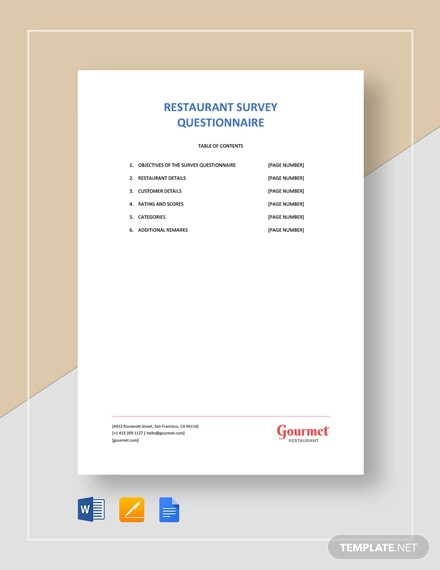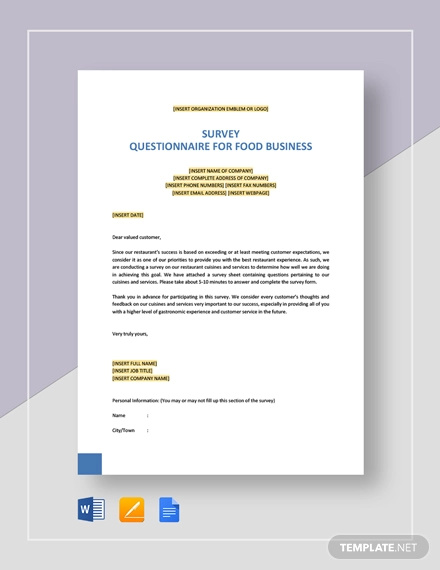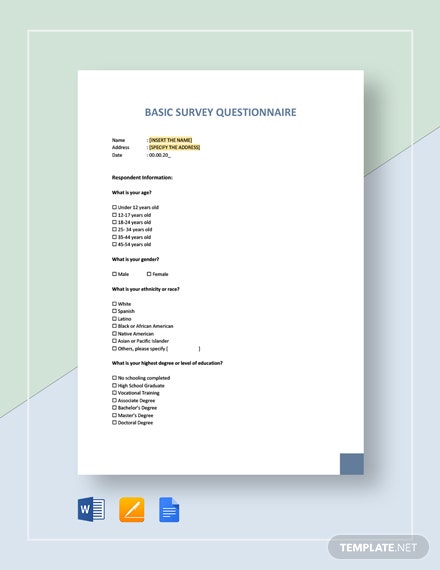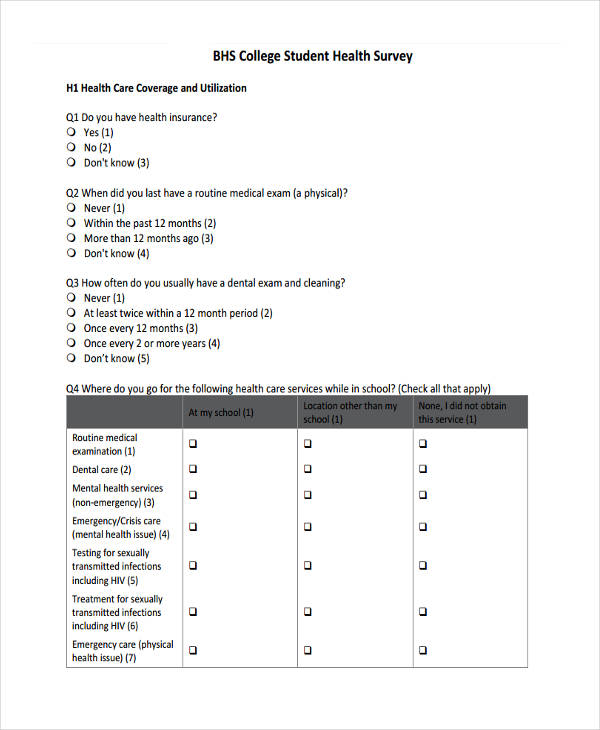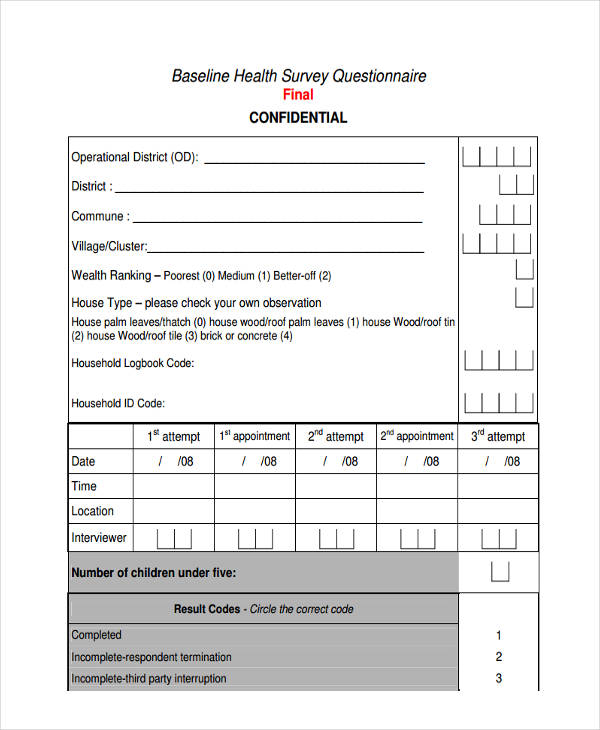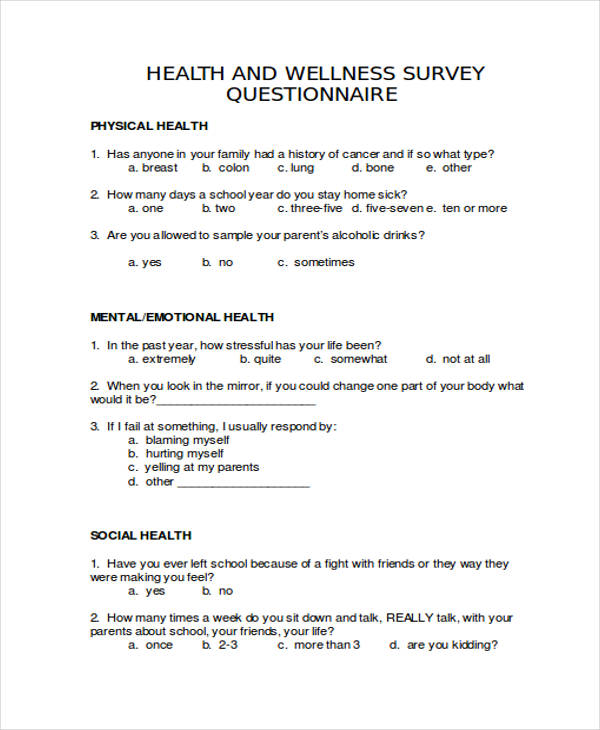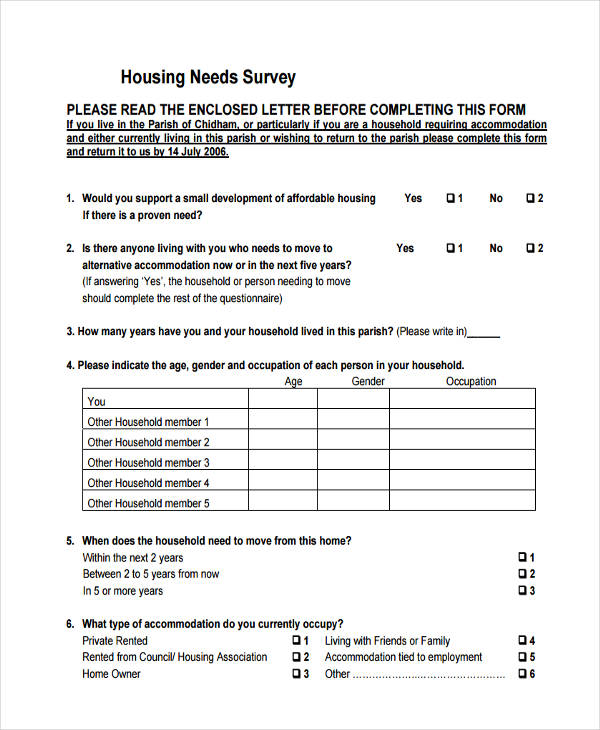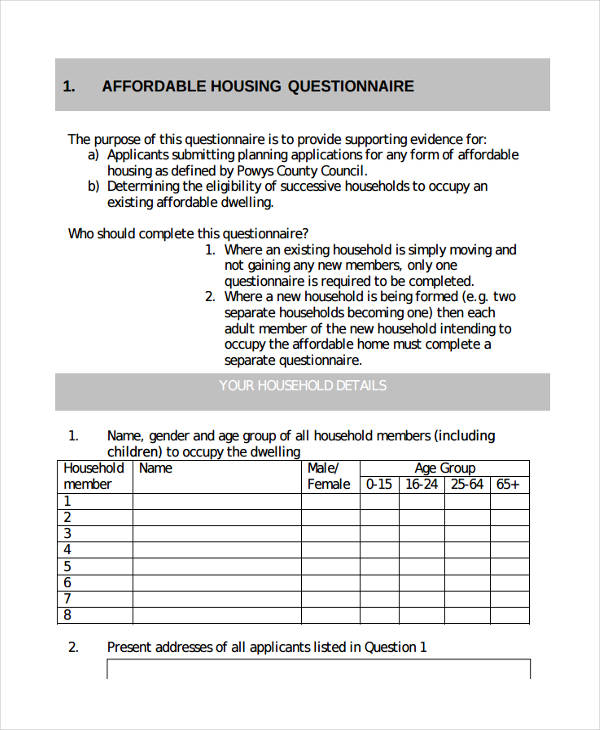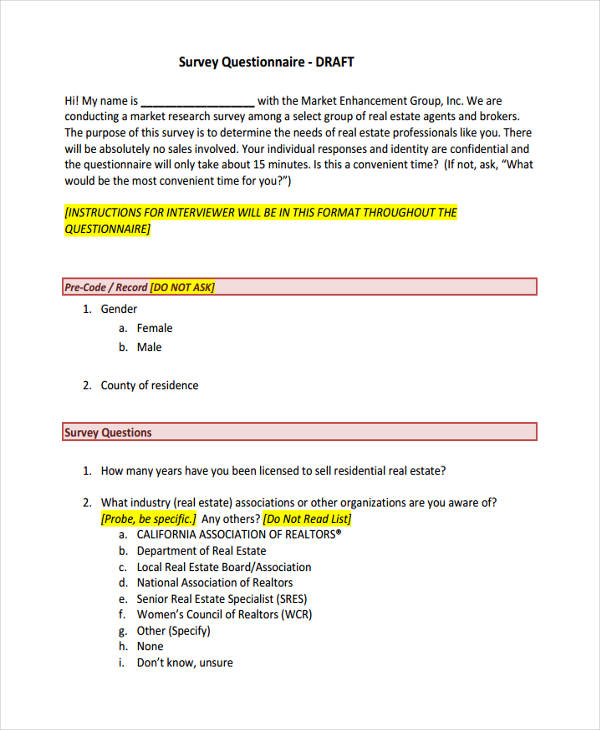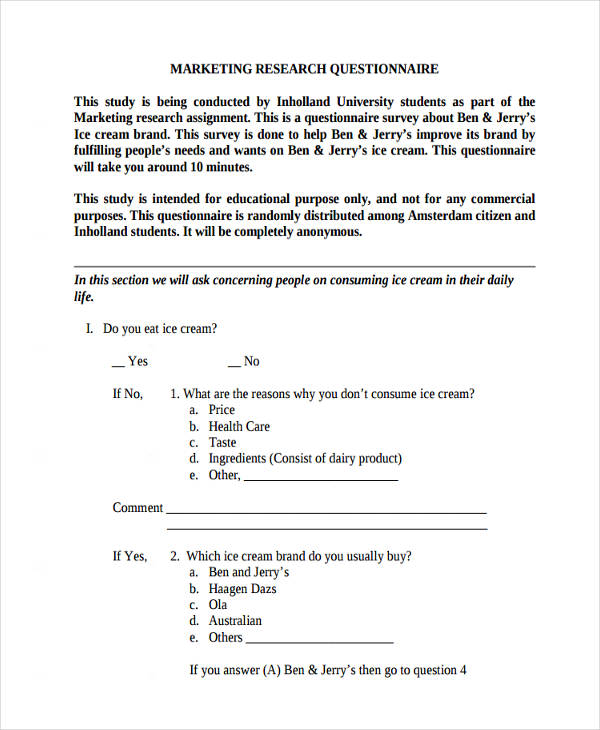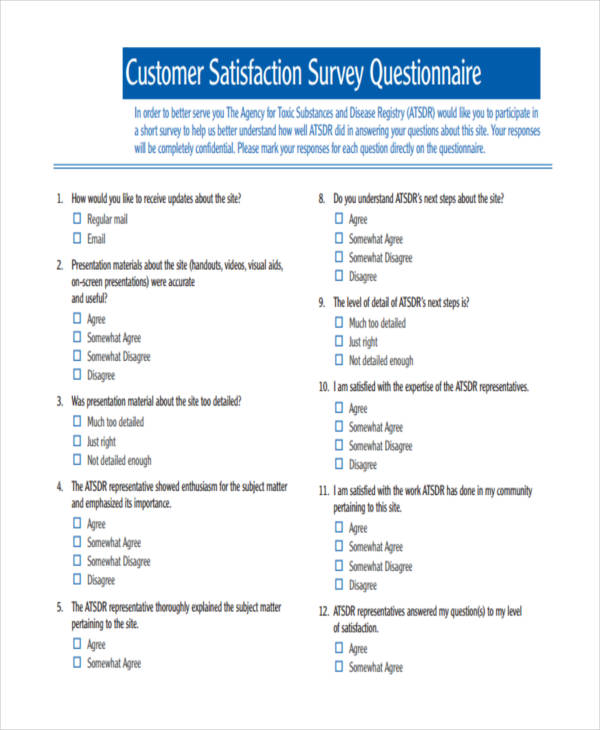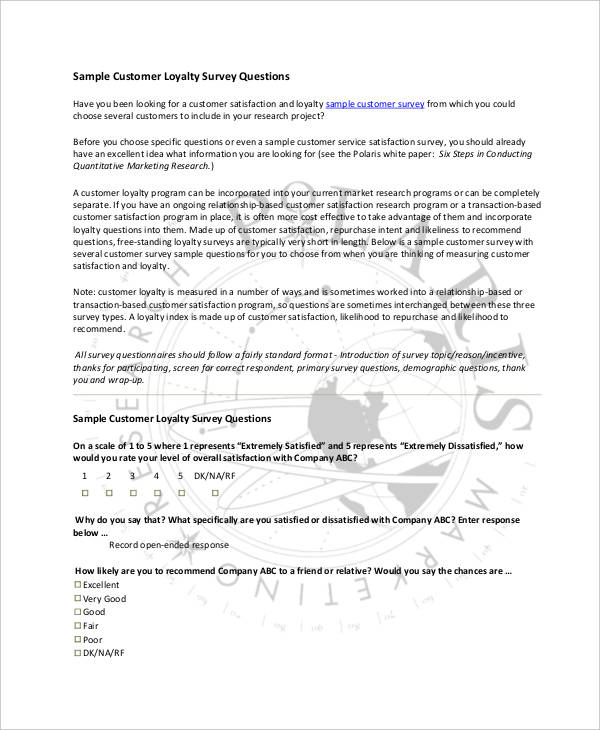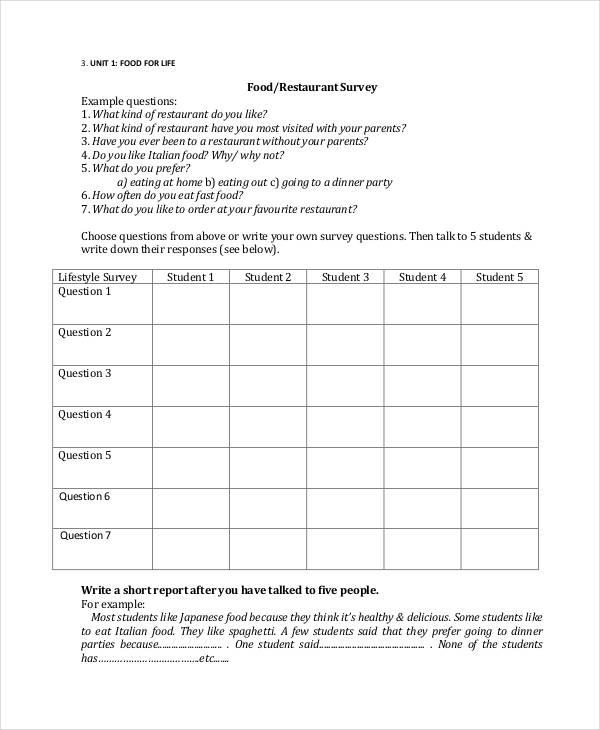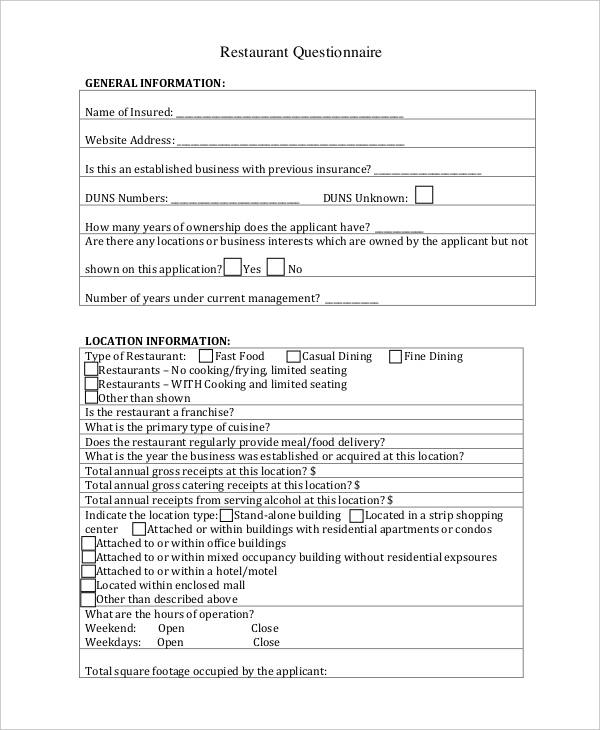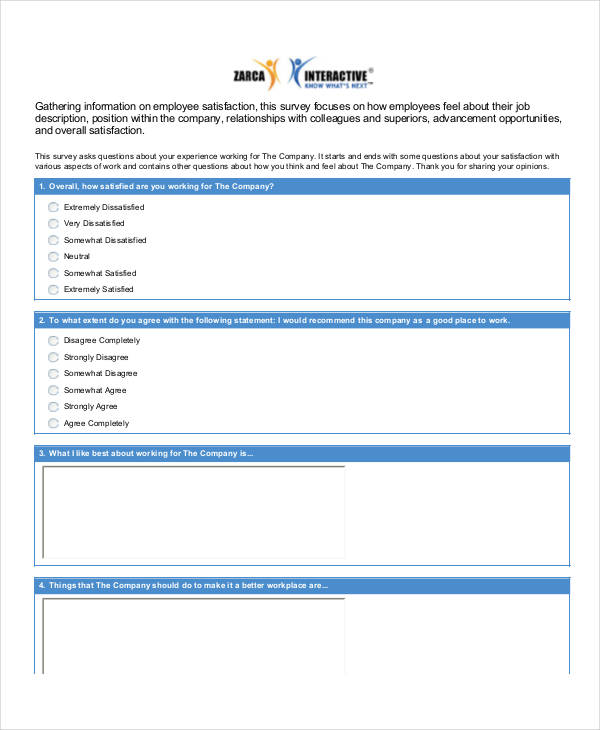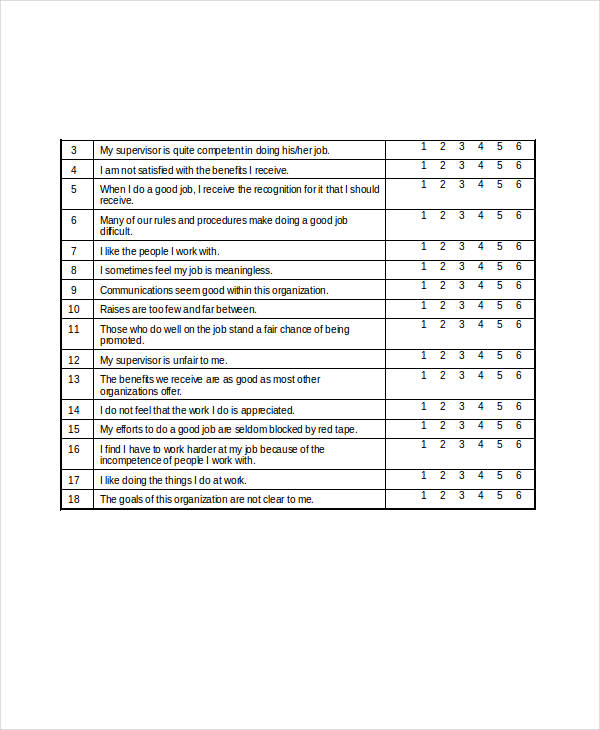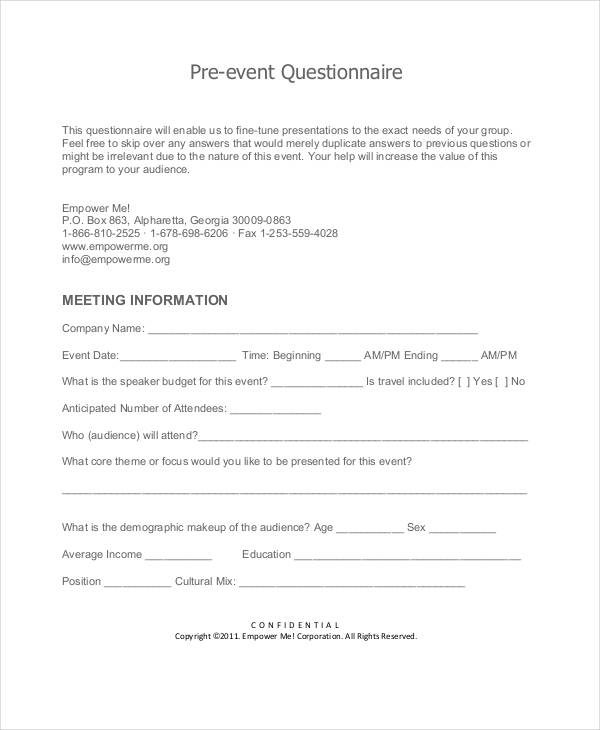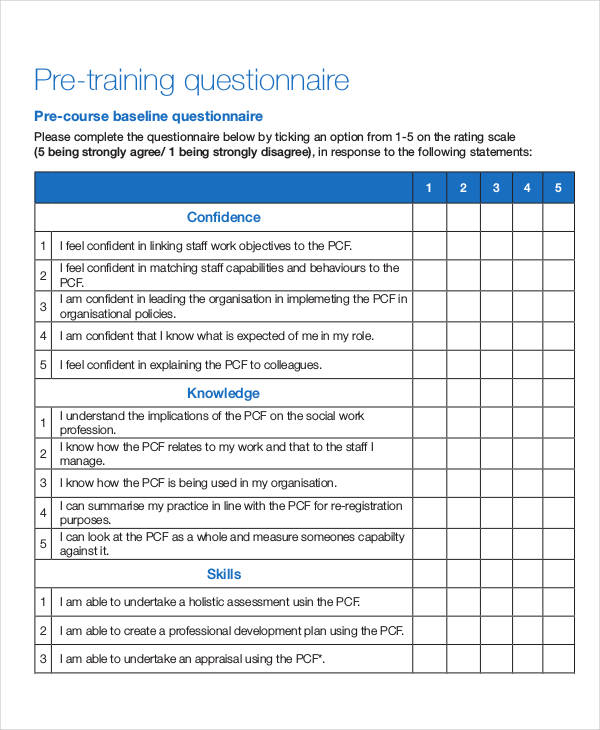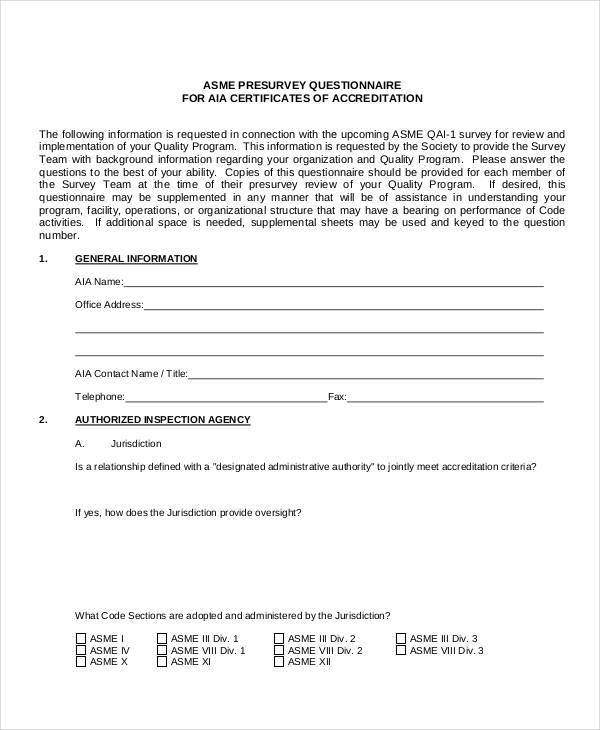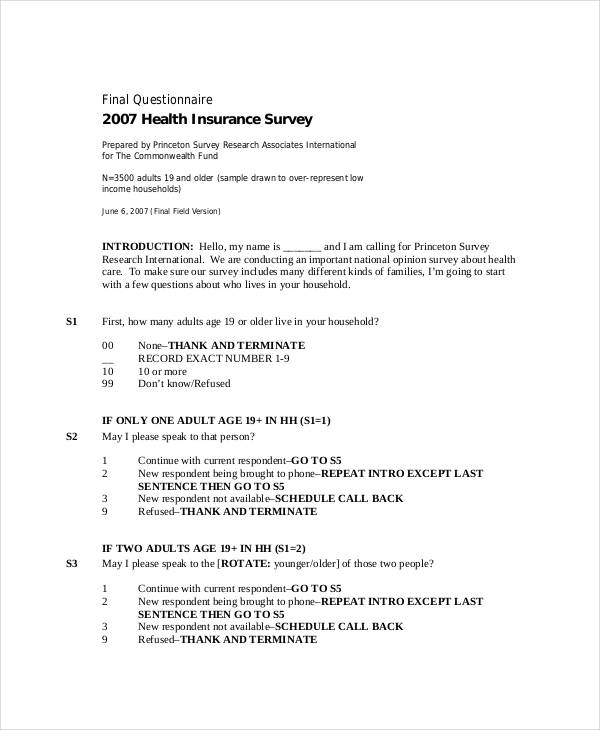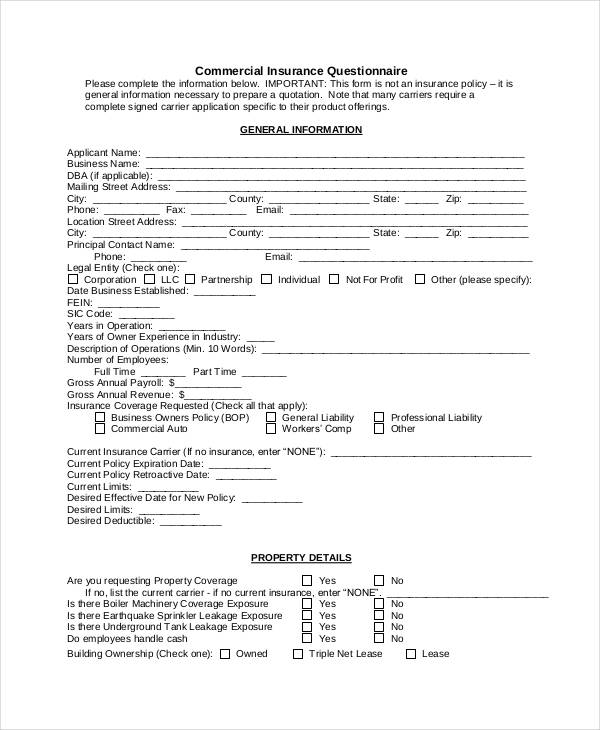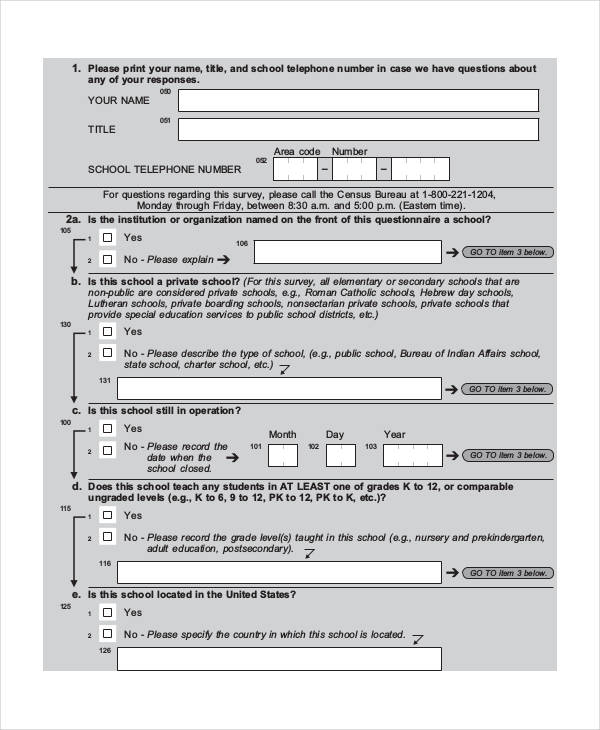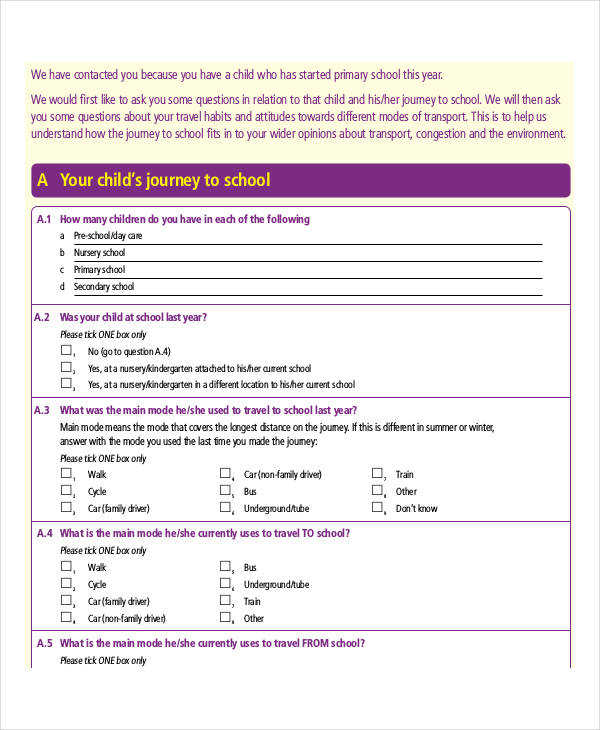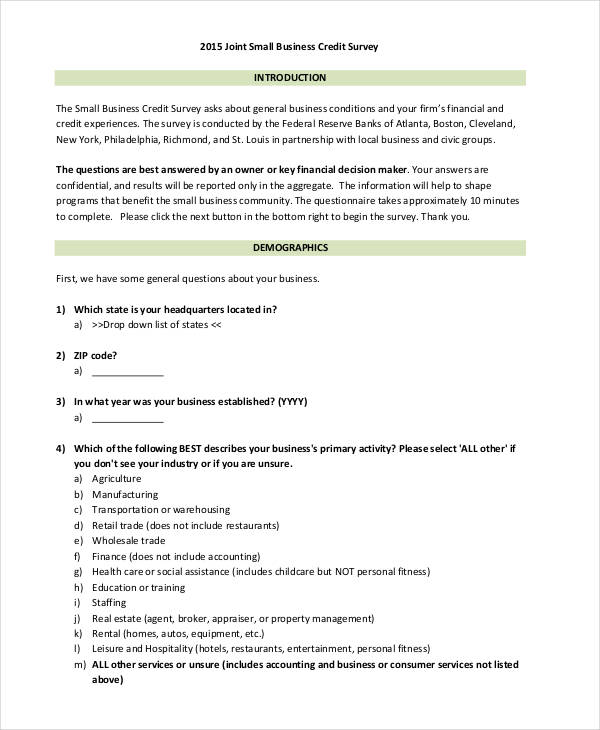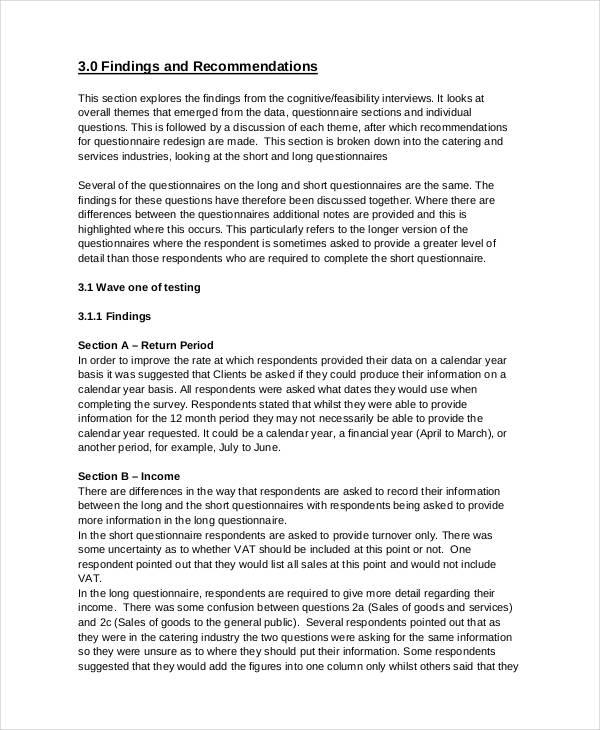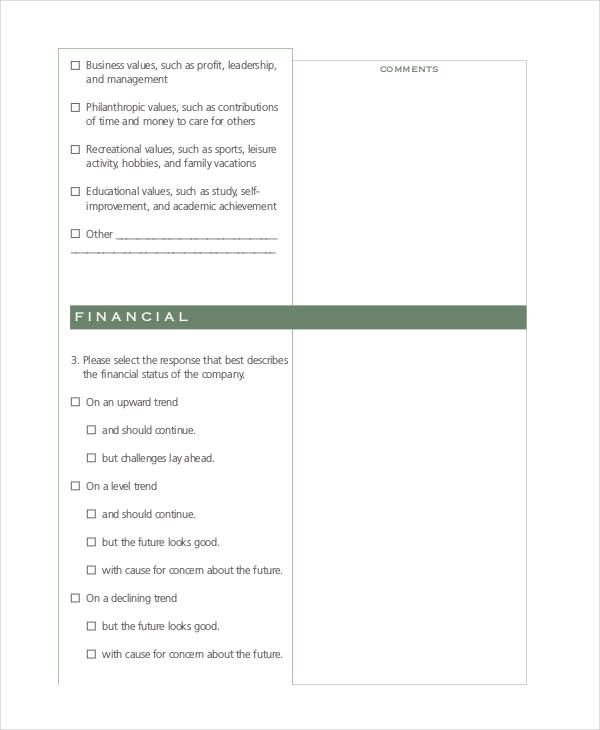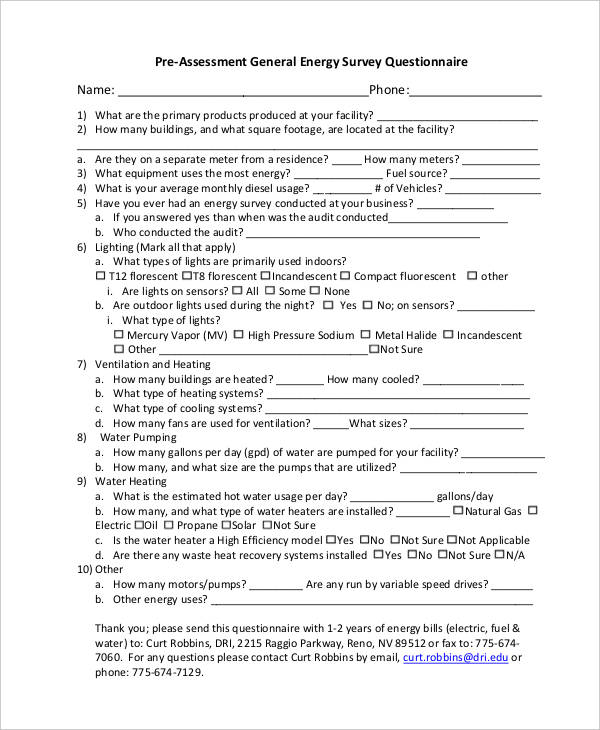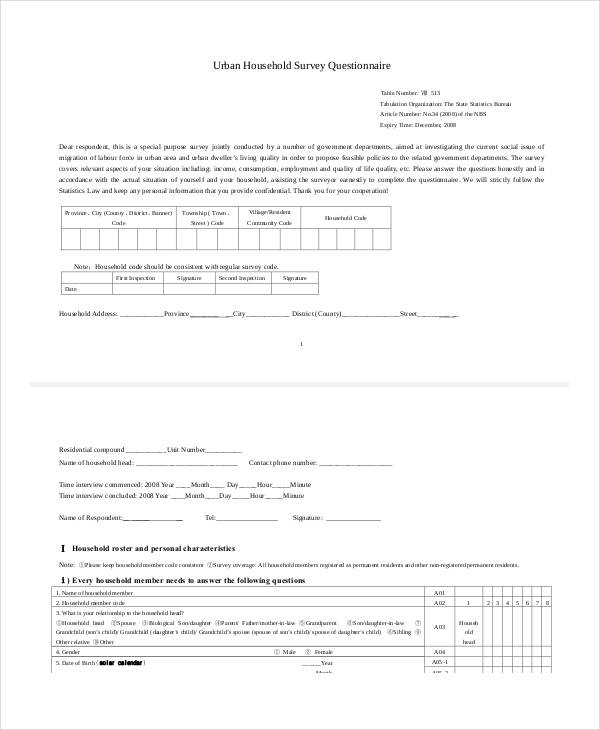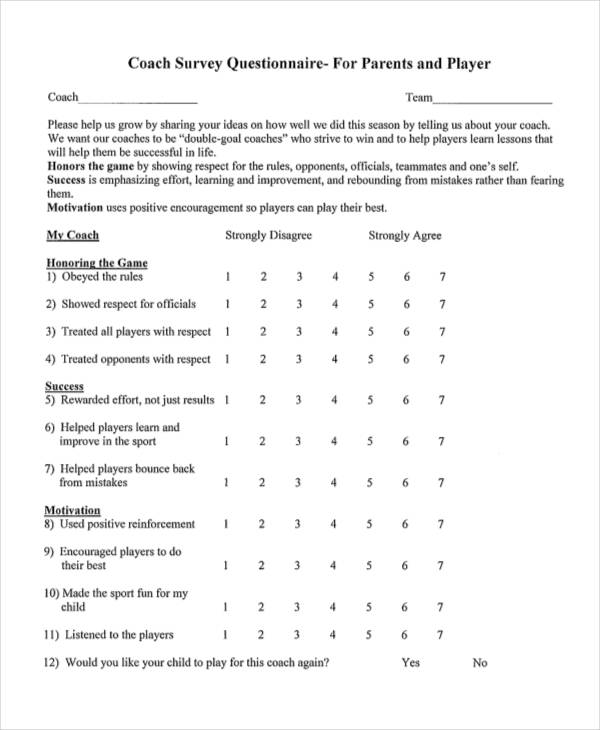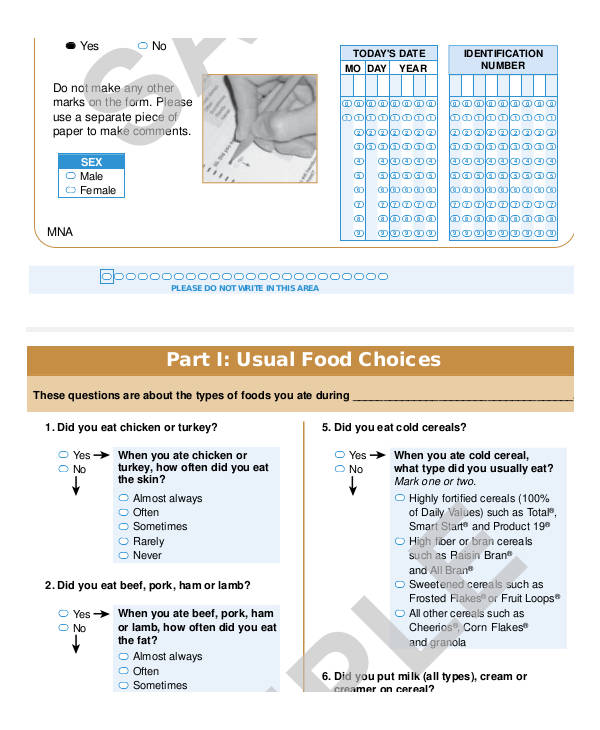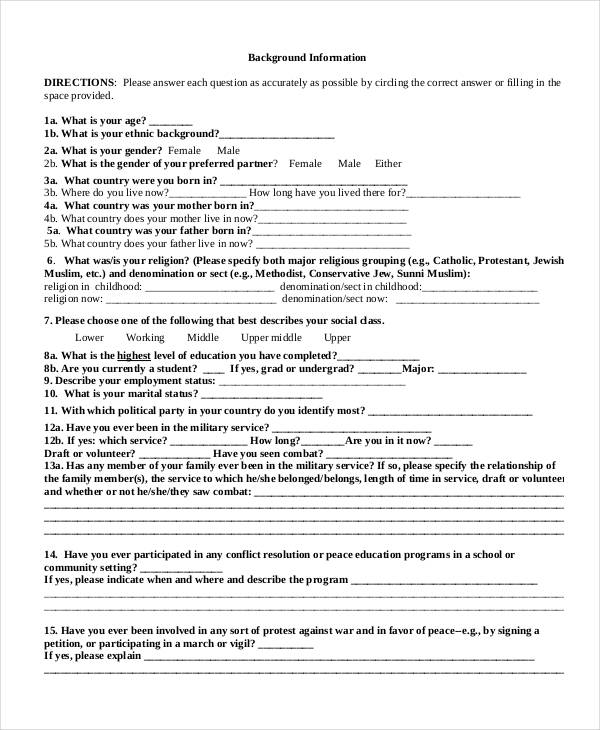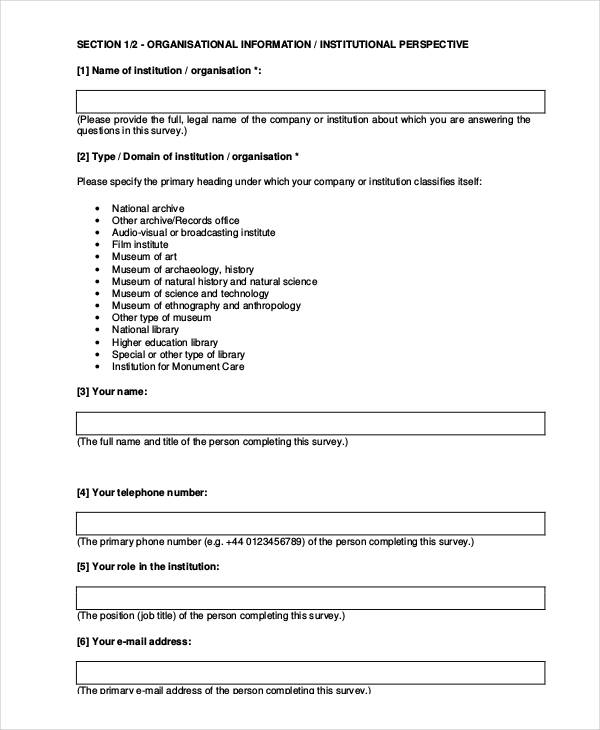32+ Survey Questionnaire Examples to Download
Businesses and other organizations find various means to communicate with their clients and find ways to achieve customer satisfaction. One way is through a survey questionnaire as it is to be able to help interact with individuals while also gaining essential information that can help improve operations. This article will show you ways on how to create one suitable for your needs.
32+ Survey Questionnaire Examples
Survey Questionnaire Example
Survey Questionnaire for Food Business
Basic Survey Questionnaire Template
Health Survey Questionnaire
Student Health Survey Questionnaire
Health Survey Questionnaire Example
Health and Wellness Questionnaire
Housing Survey Questionnaire
Housing Needs Survey Questionnaire
Affordable Housing Questionnaire
Market Survey Questionnaire Example
Real Estate Market Survey Questionnaire
Market Survey Questionnaire For Product
Customer Survey Questionnaire
Customer Satisfaction Survey Questionnaire
Customer Loyalty Survey Questionnaire
Restaurant Survey Questionnaire
Restaurant Food Survey Questionnaire
New Restaurant Survey Questionnaire
Employee Survey Questionnaire Example
Employee Satisfaction Survey in PDF
Job Survey Questionnaire
Job Satisfaction Survey Questionnaire
Pre-Survey Questionnaires
Pre-Event Survey Questionnaire
Pre-Training Survey Questionnaire
Pre-Survey Questionnaire for Accreditation
Insurance Survey Questionnaires
Health Insurance Survey Questionnaire
Commercial Insurance Survey Questionnaire
School Survey Questionnaire
Private School Survey Questionnaire
School Facilities Survey Questionnaire
School Travel Questionnaire
Business Survey Questionnaire Example
Small Business Survey Questionnaire
Annual Business Questionnaire
Family Business Survey Questionnaire
Energy Survey Questionnaires
Preliminary Energy Survey Questionnaire
Household Survey Questionnaire
Coach Survey Questionnaire
IT Survey Questionnaire Example
Food Survey Questionnaire
Demographic Survey Questionnaire
Thematic Survey Questionnaire
What Is a Survey Questionnaire?
It is a collection of questions used in a survey. It is a system of gathering data utilized to collect, analyze, and interpret various views of a group of people from a specific population. In such questionnaires, respondents have to provide answers to the questions asked. Situations that involve its use include school projects or quantitative research.
What Is the Purpose of a Survey Questionnaire?
Conducting a survey requires a good amount of time and effort. It involves constant research to come up with one. You also need the right resources to reach a particular amount of people. So no, a survey questionnaire isn’t normally created for the heck of it nor should it deem as a waste of one’s time.
Formal questionnaires, such as a business questionnaire or a student questionnaire, all have a definite purpose. This may be to gain important data on one’s feedback or suggestions or to simply understand the minds of the respondents to draw a conclusion for a study.
The data collected may evoke discussions on topics that have never been considered before. It will serve as a basis for future business decisions as well. A survey questionnaire will also promote proper communication between two entities to better understand common issues that need solutions.
Is it necessary to use survey questionnaires for research? For the most part, yes. You can’t base your study solely on data from online and print sources. You need to know if it is indeed true by simply going out on the field and collecting the information yourself. You may also like student questionnaire examples.
How To Create a Survey Questionnaire
Whatever you include in a survey questionnaire can impact the value of your results. An inquiry that’s complex and confusing will only garner misleading and inaccurate responses. To avoid doing so, here are some tips in writing the complete survey questionnaire.
1. State The Survey’s Purpose
The respondents have the right to know why they should answer something; you may explain this at the beginning of the survey. For example, if you are a restaurant seeking to find out whether customers enjoyed the food and the employee‘s services, then state it at the beginning of your survey questionnaire.
2. Ask Questions Clearly
It’s important to ask questions that are understandable without a second thought to avoid confusion. Don’t ask questions that have two different answers. This will help your respondents answer the survey as best as they can.
3. Make Your Content Relevant
When creating the questions for your survey questionnaire, make sure they are all relevant to your topic. Avoid asking questions that have nothing to do with your research, as it will only take up space. For example, if your survey is about student feedback on college education, then make sure to ask questions about that matter alone.
4. Write Your Questions Considerably
Some questions might seem intrusive to some respondents, so for these types of problems, it’s wise to provide an option for respondents not to answer. Depending on your topic, some questions that center on beliefs and practices can be a sensitive topic to some. But if it’s necessary, be considerate with the way you phrase these questions.
FAQs
What are the advantages of using a questionnaire?
They are easy to analyze and are one of the most familiar ways of gathering data. You can contact a large sample of the population at once, at a lower cost. The format is familiar to most respondents, which makes it easy to administer.
Who makes the survey questionnaire?
Depending on the subject matter, researchers tend to create these surveys in academic settings while the HR and marketing department does it in a corporate environment.
Why is choosing survey questionnaires not the best option always?
Respondents may not feel encouraged to provide accurate answers. The number of respondents who choose to respond may be different from those who decided not to, hence creating a bias. This is why a survey is not always the right option, but that depends on your target population.
A well-made survey questionnaire can let you gain a lot of insight from your target. According to a Forbes article, if you want to get the most of this tool, you can use social media and other online channels to gain more information. If you need any more ideas on how to create your survey questionnaire, check out our other research and analysis templates.



